From the Trenches
Buried With Care
By JARRETT A. LOBELL
Monday, February 09, 2015
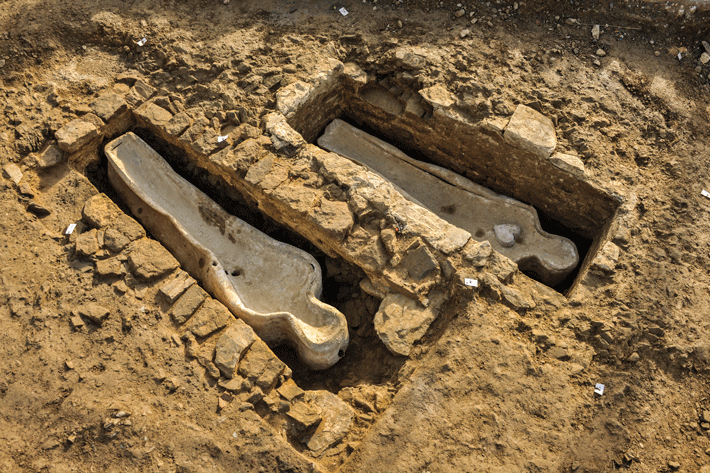
The town of Flers in northwestern France has existed since at least the twelfth century. In the fifteenth century, the small rural village of about 500 inhabitants was centered around the Church of Saint-Germain. French archaeologists excavating the church cemetery in order to understand the building, its history, and changing burial practices over the centuries have recently uncovered hundreds of burials. The majority of these were simple, wooden coffins from the medieval period, but among them were two richer coffins, both made of lead, dating to the eighteenth century. One of them had a lead heart attached to it as well.
Autumn of the Master Builder
By DANIEL WEISS
Monday, February 09, 2015
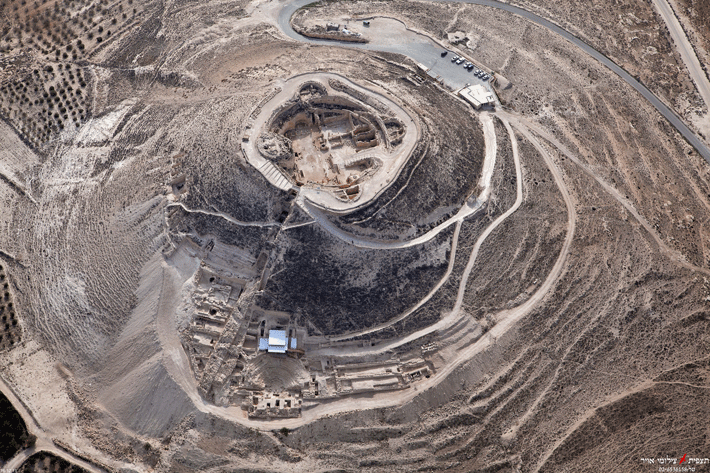
Herod, king of Judea from 37 to 4 B.C., has long been renowned as an architectural visionary, having overseen such projects as the reconstruction of the Temple of Jerusalem, the Masada palace complex, and the harbor and city of Caesarea. Now, archaeologists from the Hebrew University of Jerusalem excavating the king’s palatial complex at Herodium have uncovered evidence that Herod sometimes sacrificed extensive work on one grand construction plan in favor of another.
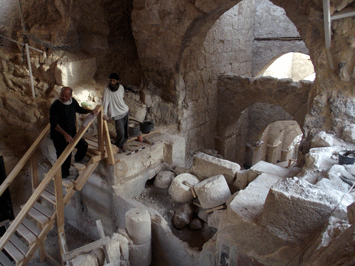 Researchers discovered a large corridor in the upper palace at Herodium, apparently designed to allow the king and his entourage direct access to the palace courtyard. The corridor was at least 65 feet high and supported by a network of arches, but was left unfinished and partially filled in with rubble when the king decided to turn the hilltop into a giant cone-shaped monument. “This was a huge project being done just for the sake of preserving his name,” says archaeologist Yakov Kalman. “This was probably done in the last 10 years of his life when Herod was not mentally stable.”
Researchers discovered a large corridor in the upper palace at Herodium, apparently designed to allow the king and his entourage direct access to the palace courtyard. The corridor was at least 65 feet high and supported by a network of arches, but was left unfinished and partially filled in with rubble when the king decided to turn the hilltop into a giant cone-shaped monument. “This was a huge project being done just for the sake of preserving his name,” says archaeologist Yakov Kalman. “This was probably done in the last 10 years of his life when Herod was not mentally stable.”
Squaring the Circles
By JASON URBANUS
Monday, February 09, 2015
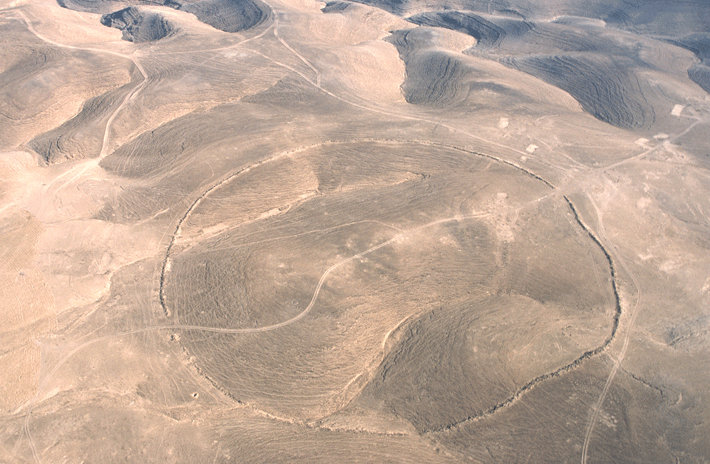
Researchers from the Aerial Photographic Archive for Archaeology in the Middle East have brought renewed attention to an archaeological phenomenon known as “Big Circles.” Spread across parts of Jordan and Syria, these manmade features have received very little archaeological attention and are relatively unknown, even to regional experts. They are thought to be at least 2,000 years old—two of them are cut by later Roman roads—but may date as far back as the Neolithic. Constructed of stone walls rarely rising more than a few feet, they measure about 1,300 feet in diameter, and, puzzlingly, show no evidence of entrances. “The combination of aerial recording of each circle, sites with which it may intersect, its context, and examination on the ground, have helped clarify their character and possible date,” says project director David Kennedy. The origin, function, and purpose of the circles remain a mystery, although Kennedy hopes that his work will provide a new perspective from which to analyze them.
Hidden in a Coin Hoard
By DANIEL WEISS
Monday, February 09, 2015
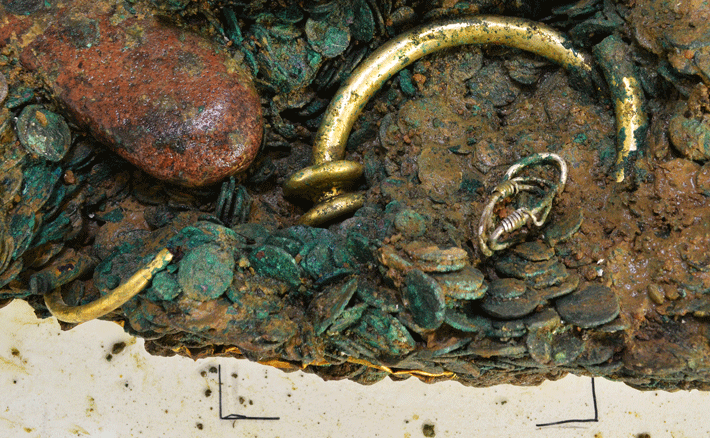
Archaeologists separating the contents of the largest known Celtic coin hoard have uncovered a number of gold items mixed in with the coins. The hoard, which was found on Jersey in the British Channel Islands, consists of 70,000 coins estimated to weigh a half ton in all. The researchers have so far removed a shoebox-sized portion of the hoard, revealing one complete gold torque and parts of six others.
The hoard is thought to date to around 50 B.C., when the Romans, led by Julius Caesar, were advancing north through France conquering Celtic tribes as they went. “We think they were trying to get their wealth out of the way,” says Neil Mahrer, a museum conservator with Jersey Heritage, “presumably with the idea of coming back for it later.”
History's Largest Megalith
By ERIC A. POWELL
Monday, February 09, 2015
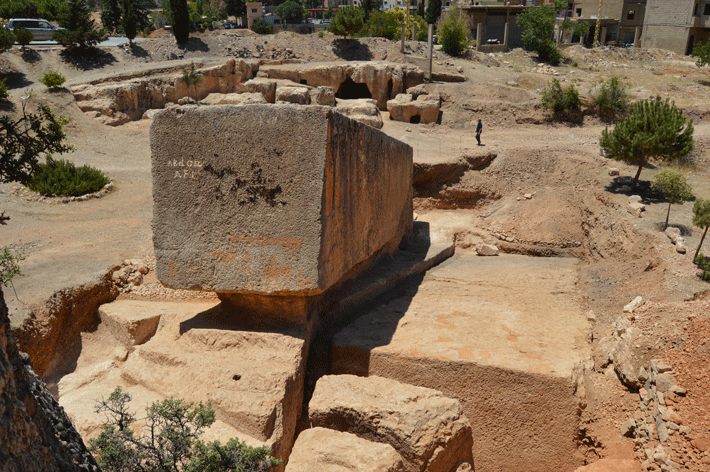
A team of archaeologists at a 2,000-year-old limestone quarry in Lebanon’s Bekka Valley recently excavated around a megalith weighing approximately 1,000 tons and dubbed Hajjar al-Hibla, or “stone of the pregnant woman.” It was intended for the Temple of Jupiter, which sits on three limestone blocks of similar size at the nearby site of Baalbek. To the team’s shock, they unearthed yet another block, this one weighing an estimated 1,650 tons, making it the largest known megalith. The German Archaeological Institute’s Margarete van Esse says excavation was suspended when the trench became dangerously deep. “Hopefully in a following campaign we can dig down to the bottom of the block,” she adds. The team wants to find clues there that will show how the megaliths were transported.
Advertisement
Advertisement
IN THIS ISSUE
From the Trenches
Seismic Shift
Off the Grid
Treasures of Rathfarnham Castle
History's Largest Megalith
Squaring the Circles
Hidden in a Coin Hoard
Autumn of the Master Builder
Buried With Care
New Mosaics at Zeugma
How to Eat a Shipwreck
Tomb of the Jealous Dog
Shackled for Eternity
Treason, Plot, and Witchcraft
Advertisement

Recent Issues
-
 May/June 2024
May/June 2024
-
 March/April 2024
March/April 2024
-
 January/February 2024
January/February 2024
-
 November/December 2023
November/December 2023
-
 September/October 2023
September/October 2023
-
 July/August 2023
July/August 2023
-
 May/June 2023
May/June 2023
-
 March/April 2023
March/April 2023
-
 January/February 2023
January/February 2023
-
 November/December 2022
November/December 2022
-
 September/October 2022
September/October 2022
-
 July/August 2022
July/August 2022
-
 May/June 2022
May/June 2022
-
 March/April 2022
March/April 2022
-
 January/February 2022
January/February 2022
-
 November/December 2021
November/December 2021
-
 September/October 2021
September/October 2021
-
 July/August 2021
July/August 2021
-
 May/June 2021
May/June 2021
-
 March/April 2021
March/April 2021
-
 January/February 2021
January/February 2021
-
 November/December 2020
November/December 2020
-
 September/October 2020
September/October 2020
-
 July/August 2020
July/August 2020
-
 May/June 2020
May/June 2020
-
 March/April 2020
March/April 2020
-
 January/February 2020
January/February 2020
-
 November/December 2019
November/December 2019
-
 September/October 2019
September/October 2019
-
 July/August 2019
July/August 2019
-
 May/June 2019
May/June 2019
-
 March/April 2019
March/April 2019
-
 January/February 2019
January/February 2019
-
 November/December 2018
November/December 2018
-
 September/October 2018
September/October 2018
-
 July/August 2018
July/August 2018
-
 May/June 2018
May/June 2018
-
 March/April 2018
March/April 2018
-
 January/February 2018
January/February 2018
-
 November/December 2017
November/December 2017
-
 September/October 2017
September/October 2017
-
 July/August 2017
July/August 2017
-
 May/June 2017
May/June 2017
-
 March/April 2017
March/April 2017
-
 January/February 2017
January/February 2017
-
 November/December 2016
November/December 2016
-
 September/October 2016
September/October 2016
-
 July/August 2016
July/August 2016
-
 May/June 2016
May/June 2016
-
 March/April 2016
March/April 2016
-
 January/February 2016
January/February 2016
-
 November/December 2015
November/December 2015
-
 September/October 2015
September/October 2015
-
 July/August 2015
July/August 2015
-
 May/June 2015
May/June 2015
-
 March/April 2015
March/April 2015
-
 January/February 2015
January/February 2015
-
 November/December 2014
November/December 2014
-
 September/October 2014
September/October 2014
-
 July/August 2014
July/August 2014
-
 May/June 2014
May/June 2014
-
 March/April 2014
March/April 2014
-
 January/February 2014
January/February 2014
-
 November/December 2013
November/December 2013
-
 September/October 2013
September/October 2013
-
 July/August 2013
July/August 2013
-
 May/June 2013
May/June 2013
-
 March/April 2013
March/April 2013
-
 January/February 2013
January/February 2013
-
 November/December 2012
November/December 2012
-
 September/October 2012
September/October 2012
-
 July/August 2012
July/August 2012
-
 May/June 2012
May/June 2012
-
 March/April 2012
March/April 2012
-
 January/February 2012
January/February 2012
-
 November/December 2011
November/December 2011
-
 September/October 2011
September/October 2011
-
 July/August 2011
July/August 2011
-
 May/June 2011
May/June 2011
-
 March/April 2011
March/April 2011
-
 January/February 2011
January/February 2011
Advertisement






